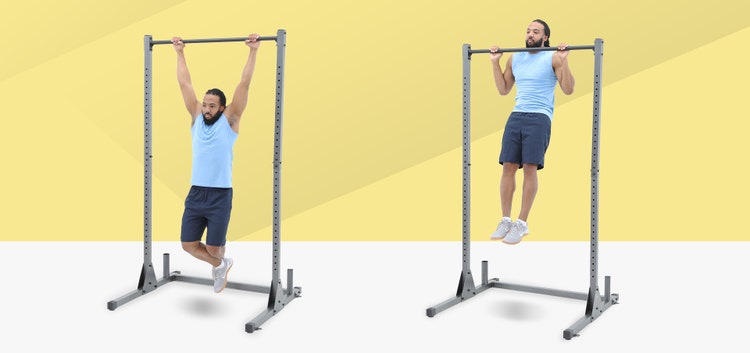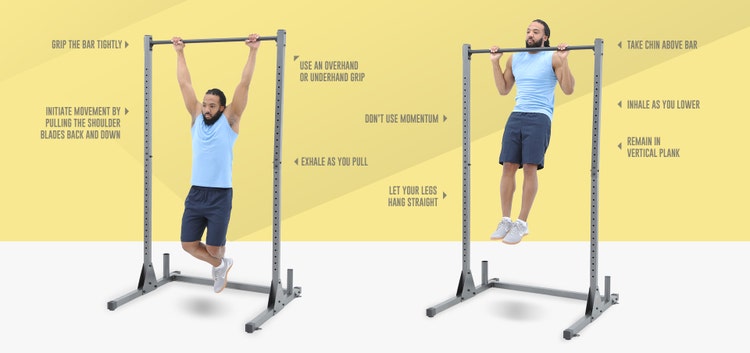Master This Move: Pull-Up

The pull-up is one of the most popular body-weight movements of all time. Having to fight gravity directly, it is also considered one of the most challenging moves to perform; often, it is used as a gauge for an individual’s upper-body strength.
Beginner Considerations
If you have a history of shoulder injuries and issues, this movement should be used with caution. Tight lats and shoulders will inhibit the effectiveness of this exercise, as well as create a potentially unsafe range of motion. Consult your physician and physical therapist or chiropractor for clearance for this exercise.
Best Practices

- Warm up the shoulders and lats before beginning.
- Depending on your experience and strength, you may want to begin with an underhand grip and then progress to an overhand.
- Let your legs hang down and keep them straight.
- Think about your body as one stiff board, in a vertical plank position.
- Try not to use momentum, and use full range of motion with your arms fully extended at the bottom and chin above the bar at the top.
https://www.youtube.com/watch?v=mHn__s-eG-s
Master This: Pull-Up
- Grip a bar that is high enough so your feet are off the ground when in a dead-hang position.
- Grip the bar with a strong, tight grip. Actively pull yourself up so that your chin is at least level with the bar.
- Slowly lower yourself back down into the dead-hang position.
- From a dead hang, continue to repeat for desired number of reps.
Make It Easier: Use an assisted pull-up machine, or use a band that you step your foot in.
Make It Harder: Use a slower tempo, or add a weight vest.
Photo credit: Tom Casey, box24studio.com